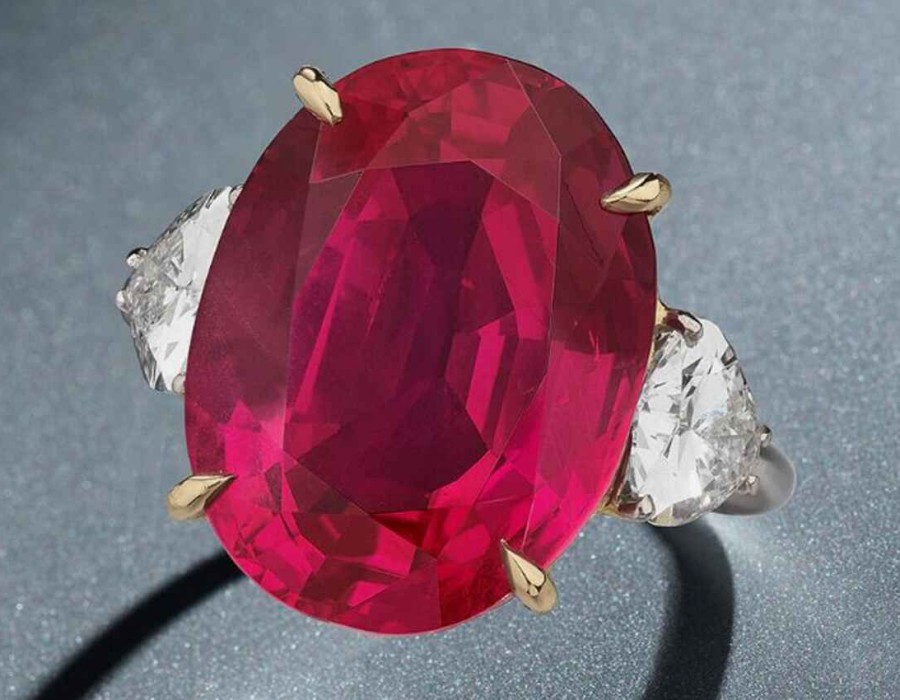Among all of the gemstones that light up the world, ruby is one that represents passion, power, and prosperity. Coveted for its deep red color and brilliance, ruby is one of the most valuable and sought-after gemstones in the world. But behind its beauty is what makes genuine ruby gemstone unique—it's the rare combination of natural formation, geologic conditions, and cultural appreciation, specifically its high position in the Navratan, the nine sacred astrological gemstones.
What Is a Ruby and How Does It Get Made?
Rubies are a red gemstone type called corundum (aluminum oxide). The red color is due to the presence of chromium impurities in the crystal structure. The more chromium, the redder and more vivid—ranging from pinkish-red to the very valuable "pigeon blood" red.
Why are rubies rare is the particular geological setting in which they occur. Rubies occur under high pressure and temperature, usually in metamorphic rocks such as marble or basalt deposits. These settings are not abundant, and consequently, the quality rubies are a geological anomaly.
Where Do Rubies Come From?
The origin of a ruby is also responsible for determining its value and preciousness. A few of the world's biggest ruby sources are:
Myanmar (Burma): The Mogok Valley mines famous rubies with deep red color and high clarity. Burmese rubies are highly valued due to their beauty and background.
Mozambique: New player in the gemstone world, Mozambique rubies are in demand due to their size, evenness of color, and abundance.
Sri Lanka (Ceylon): Produces pale, pinkish rubies of excellent clarity.
Thailand and Cambodia: Famous for rubies having more color and inclusions.
Origin can in most cases be identified by sophisticated gemological examination, and verified origin makes a ruby's market and astrological value higher.
Why Rubies Are So Rare and Valuable?
A few reasons are accountable for the price and rarity of a ruby:
Limited Natural Occurrences: Rubies occur in restricted places under certain geologic conditions.
Strong Demand and Low Supply: Good rubies are always sought after, yet they are difficult to find.
Untreated Stones: True, natural rubies of rich color and few inclusions are very scarce.
Symbolic Significance: Rubies also have been symbolic of royalty, protection, and power over the course of history, and thus are emotionally and culturally meaningful.
These make ruby not only a jewel of beauty but a valued treasure and spiritual symbol.
Ruby in Navratan: The Gem of the Sun"
Ruby is also greatly esteemed in Vedic astrology as one of the Navratan—a set of nine sacred gemstones corresponding to the nine celestial bodies or Navagrahas. Ruby is related to the Sun (Surya), the energy-yielding, life-giving, and governing planet.
Astrological Benefits of Ruby (Manikya):
- Increases confidence, leadership, and ego
- Strengthens the heart, promotes circulation, and enhances vitality
- Brings fame, success, and honor
- Shields against undesirable energies and mental stress
In order to receive maximum benefit, the ruby must be natural and not treated, ideally in gold on the ring finger of the right hand, preferably on a Sunday. Burmese rubies are usually advised for the maximum astrological benefit.
Conclusion: A Rare Jewel with Celestial Power
The ruby is more valuable than its price tag. Its scarcity in nature, vibrant cultural history, and Navratan astrological meaning render it a gem of unparalleled significance. Whether one wears it for its beauty, distinction, or astrological appeal, the ruby stone origin remains an abiding symbol of strength and divine power.
When you put on a ruby, you're not merely putting on a gem—you're putting on a chip of the Earth's blazing interior, charged by the Sun itself.




.jpg)

Comments